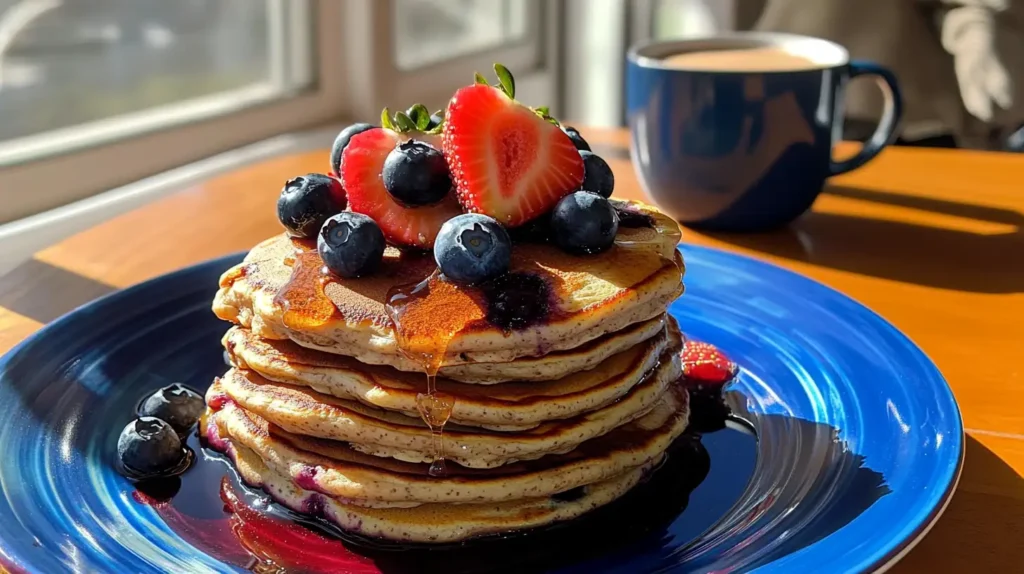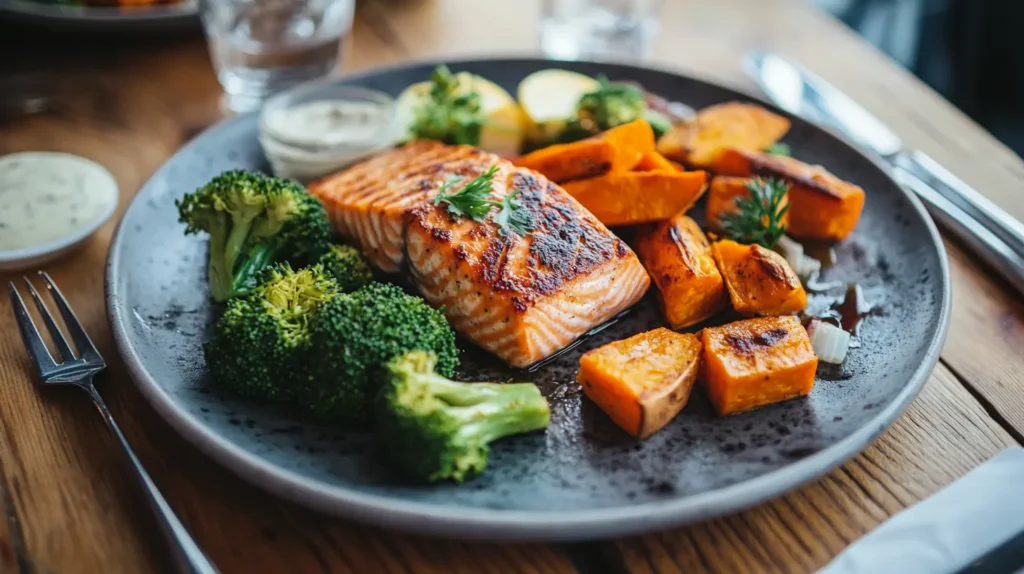Are you ready to revolutionize your diet with gluten-free high protein meals? Whether you’re navigating dietary restrictions, boosting your protein intake, or just looking for delicious and nutritious meal ideas, this guide has got you covered. From understanding the essentials of a gluten-free, protein-rich lifestyle to exploring mouthwatering recipes and meal-planning tips, we’re diving into everything you need to know to maintain a balanced, satisfying, and health-focused diet.
Table of Contents
Understanding the Basics of Gluten-Free High Protein Meals
What is a Gluten-Free Diet?
A gluten-free diet eliminates all foods containing gluten, a protein found in wheat, barley, rye, and their derivatives. While this lifestyle is essential for people with celiac disease or gluten sensitivity, it’s increasingly popular among those seeking better digestion and overall health. Eliminating gluten often requires creativity in finding suitable, nutrient-dense substitutes, especially for staples like bread and pasta.
The Importance of High Protein in a Gluten-Free Lifestyle
Protein is a critical macronutrient that supports muscle repair, immune health, and energy production. In a gluten-free diet, maintaining adequate protein intake can be challenging, as many traditional protein sources (like whole-grain breads) are off-limits. High-protein gluten-free meals help fill this gap, offering essential nutrients without compromising your health goals.
Balancing Nutritional Needs on a Gluten-Free Diet
Adopting a gluten-free high protein approach doesn’t mean neglecting other nutrients. Pair your protein sources with complex carbs like quinoa, sweet potatoes, and legumes. Don’t forget healthy fats—avocado, nuts, and seeds are fantastic options. A well-rounded meal ensures you’re getting the vitamins, minerals, and energy needed to thrive.

Benefits of Gluten-Free High Protein Meals
Improved Digestion and Reduced Inflammation
One of the most significant perks of gluten-free high protein meals is better digestion. For individuals with gluten intolerance or celiac disease, avoiding gluten prevents bloating, discomfort, and inflammation. High-protein options like quinoa, chicken, and legumes can also support gut health by reducing irritants that come from processed, gluten-laden foods.
Enhanced Muscle Growth and Repair
Proteins are the building blocks of muscles. Whether you’re recovering from a workout or trying to increase your strength, including high protein gluten-free recipes in your diet ensures adequate amino acid intake. Lean proteins such as grilled chicken or turkey pair beautifully with gluten-free grains to promote muscle repair.
Sustained Energy and Satiety
High-protein meals help stabilize blood sugar levels, offering long-lasting energy. When paired with gluten-free carbs like sweet potatoes or legumes, these meals provide a sustained energy boost without the crashes associated with refined gluten products. Plus, the fullness factor keeps you satisfied longer, making it easier to avoid unnecessary snacking.
For recipes that focus on sustaining energy, check out this guide to meal prep for gluten-free high protein diets.
Key Ingredients for Gluten-Free High Protein Meals
Protein Sources: Meat, Poultry, and Fish
Lean meats like turkey, chicken, and fish are excellent sources of high-quality protein that are naturally gluten-free. Grilled salmon, for example, not only provides protein but also offers omega-3 fatty acids, which have anti-inflammatory properties.
Plant-Based Protein Options: Lentils, Chickpeas, and Quinoa
Vegetarians needn’t worry! Gluten-free plant-based protein options such as lentils, chickpeas, and quinoa pack a nutritional punch. Quinoa is particularly unique because it’s one of the few plant-based foods that contain all nine essential amino acids.
Dairy and Gluten-Free Alternatives
Greek yogurt, cottage cheese, and lactose-free milk are popular dairy options that align well with a gluten-free lifestyle. Be sure to check labels for gluten-free certification, especially when purchasing flavored varieties.
Gluten-Free Protein Powders: Pros and Cons
Gluten-free protein powders are a convenient way to increase protein intake, especially for athletes or those on the go. However, it’s essential to choose high-quality options free of artificial fillers or added sugars. Pea and brown rice protein powders are excellent plant-based choices.
Easy and Delicious Gluten-Free High Protein Recipes
Breakfast: Gluten-Free Protein Pancakes and Smoothies
Start your day right with a delicious gluten-free twist on classic breakfast favorites. Protein pancakes made with almond flour or gluten-free oats are a powerhouse of nutrition. Top them with fresh berries and a drizzle of honey for natural sweetness.
Smoothies are another fantastic option. Combine unsweetened almond milk, a gluten-free protein powder, spinach, and a frozen banana for a refreshing drink that’s packed with nutrients.
For more breakfast inspiration, check out this guide to high-protein gluten-free pancakes.
Lunch: Protein-Packed Salad Bowls
Salads don’t have to be boring! Create a hearty gluten-free high protein meal by combining quinoa, grilled chicken, and roasted vegetables. Add a sprinkle of nuts or seeds for crunch and a boost of healthy fats.
For vegetarians, swap the chicken for marinated tofu or a scoop of hummus. Toss with a lemon-tahini dressing for a zesty finish.
Dinner: Hearty Meat and Vegetable Dishes
Dinner is the perfect time to enjoy warm, filling meals. Try roasted salmon with sweet potato wedges and a side of steamed broccoli for a balanced dish. Or, whip up a stir-fry using lean beef, snap peas, and gluten-free soy sauce over cauliflower rice.

Snacks: High Protein, Gluten-Free Energy Bites
Stay energized throughout the day with homemade energy bites. These bite-sized treats combine gluten-free oats, nut butter, and a touch of honey. Add a scoop of protein powder for an extra boost.
Want more snack ideas? Explore this guide on gluten-free high-protein snacks.
Meal Planning for Gluten-Free High Protein Diets
How to Structure Your Weekly Meal Plan
Planning your meals ensures you always have gluten-free high protein meals ready to go. Start by preparing a mix of proteins like chicken, quinoa, and lentils at the beginning of the week. Pair them with versatile veggies like spinach, zucchini, and carrots.
Shopping List Essentials for Gluten-Free High Protein Meals
Keep your pantry stocked with gluten-free basics like almond flour, quinoa, and beans. Fresh ingredients such as lean meats, eggs, and low-fat dairy should also be on your list. Don’t forget snacks like nuts and seeds to stay on track between meals.
Tips for Meal Prep and Storage
Batch-cooking is your best friend. Prepare a large batch of grilled chicken, quinoa, or roasted vegetables, and portion them into containers. Store these in the fridge for quick lunches or dinners throughout the week. Use airtight containers to keep your meals fresh longer.
Expert Tips for a Balanced Gluten-Free High Protein Diet
Portion Control and Caloric Balance
Even when enjoying gluten-free high protein meals, maintaining portion control is key to a healthy diet. Eating too much protein can strain your kidneys, while neglecting other food groups may leave you nutrient-deficient. Aim for balanced plates that include lean protein, colorful veggies, and healthy fats.
Using a food scale or measuring cups can help you stay mindful of serving sizes. Apps like MyFitnessPal are also handy for tracking protein intake and ensuring your meals fit your daily goals.
Combining Protein Sources for Maximum Benefits
Variety is essential when crafting a balanced diet. Mixing plant-based proteins like lentils or chickpeas with animal proteins like chicken or fish provides a complete amino acid profile. This combination is especially important for vegetarians or those limiting animal products.
Try pairing quinoa with black beans or eggs with sautéed spinach for a nutrient-dense meal. Combining sources also enhances flavor, making it easier to stick to your diet plan.
Staying Hydrated and Supplementing Wisely
High-protein diets require plenty of water to support digestion and kidney function. Aim for at least eight glasses of water daily. Additionally, consider supplements like vitamin D or B12 if your gluten-free diet lacks fortified grains or animal products. Always consult a healthcare professional before introducing new supplements.
Common Challenges and Solutions
Finding Affordable Gluten-Free High Protein Options
A common misconception about gluten-free high protein meals is that they’re costly. While specialty gluten-free products can be pricey, there are budget-friendly alternatives. Focus on naturally gluten-free staples like eggs, beans, and seasonal vegetables. Buying in bulk or shopping at farmer’s markets can further reduce costs.
Avoiding Cross-Contamination
Cross-contamination is a significant concern for those with gluten intolerance. Always use separate cooking tools, utensils, and surfaces for gluten-free foods. Be cautious when dining out by asking detailed questions about meal preparation.
At home, label gluten-free products clearly to avoid mix-ups. Investing in airtight containers can also help keep your gluten-free pantry items safe from cross-contamination.
Adapting Recipes for Family and Guests
Cooking for a family or group with different dietary needs can be tricky. Start with versatile recipes that allow for simple modifications, like gluten-free pasta dishes or customizable salad bowls. Offer a variety of toppings and sides so everyone can tailor their plate to their liking.
FAQs About Gluten-Free High Protein Meals
Can gluten-free meals be high in protein?
Absolutely! Gluten-free diets and high-protein eating go hand in hand. By focusing on whole, naturally gluten-free foods like lean meats, fish, eggs, legumes, and quinoa, you can easily create gluten-free high protein meals. The key is to mix and match ingredients to ensure variety and nutritional balance.
What are the best gluten-free protein options for vegetarians?
Vegetarians following a gluten-free diet have plenty of options. Protein-packed choices like lentils, chickpeas, black beans, tofu, and tempeh are excellent. Don’t forget quinoa, which is not only gluten-free but also a complete protein. Incorporating nuts, seeds, and gluten-free protein powders can also boost your intake.
Are gluten-free high protein diets suitable for weight loss?
Yes! High-protein diets can promote satiety, making it easier to manage portion sizes and avoid overeating. Combining this with a gluten-free approach can be especially helpful if you’re addressing gluten intolerance or looking to reduce inflammation. Remember to balance protein with healthy fats and carbs for sustainable weight loss.
How can I ensure my meals are truly gluten-free?
Ensuring your meals are gluten-free requires careful label reading and preparation. Always check packaging for gluten-free certification and avoid cross-contamination in your kitchen. Use separate utensils and storage containers for gluten-free foods. Dining out? Don’t hesitate to ask about preparation methods to confirm your dish is safe.
Conclusion and Final Thoughts
Gluten-free high protein meals are not only possible but incredibly versatile and delicious. With the right ingredients, you can create satisfying dishes that meet your nutritional needs without compromising on flavor. From hearty breakfasts to wholesome dinners and energy-packed snacks, the options are endless.
By focusing on natural, gluten-free proteins like lean meats, legumes, and quinoa, and incorporating smart meal-planning strategies, you can maintain a healthy, balanced diet effortlessly.
For more inspiration, explore tons of high-protein gluten-free recipes. Get creative in the kitchen, and enjoy the benefits of a gluten-free, protein-rich lifestyle today!

